- Home
- slideshows
- miscellaneous
- 106 skydives with a broken ankle: Inside how Tom Cruise pulled off the thrilling HALO jump in 'Mission: Impossible - Fallout'
106 skydives with a broken ankle: Inside how Tom Cruise pulled off the thrilling HALO jump in 'Mission: Impossible - Fallout'
Finding a unique way to get into Paris.

Creating a helmet so we could see Tom Cruise’s face.
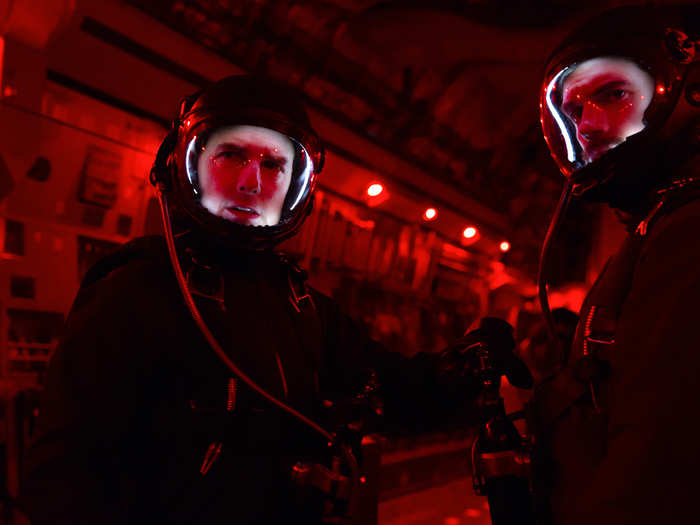
If you were to do a HALO jump in real life, a clear helmet showing your whole face wouldn’t be needed. But this is Tom Cruise we’re taking about!
When Cruise and the “Fallout” team learned that the proper gear for a HALO jump is an oxygen mask that covers most of your face and a helmet leaving just your eyes to be seen, there was an immediate rush to come up with something better for Cruise to wear.
“We created a helmet that had a good look and the oxygen sustained,” Eastwood said.
But the mask also had to have lights inside of it so we, the audience, could see that it is in fact Cruise doing the jump. That brought another set of concerns.
“It took extensive pressure testing and altitude testing to get the lighting system consistently safe,” Eastwood said. “We didn’t want them to explode. A fiery Tom Cruise head, that’s very bad.”
Building the largest wind tunnel in the world.
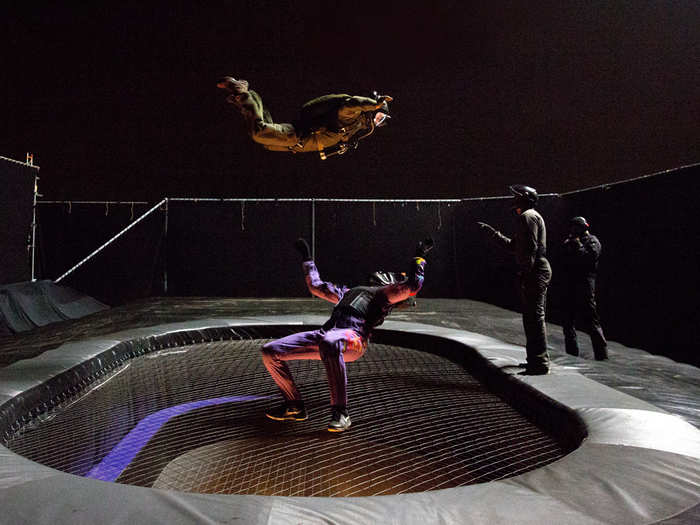
Before getting in a plane and jumping enough times to get a certified skydiver license, Cruise started his HALO training in a wind tunnel at Leavesden Studios in the UK. And as you can guess, a normal wind tunnel just wouldn’t do.
“I suggested we get a vertical wind tunnel, they said that was a good idea,” said Neil Corbould, the “Fallout” special effects supervisor. “We found a portable wind tunnel and brought it to England but found out very quickly that it was too small.”
The wind tunnel would be used to learn the choreography for the HALO jump sequence devised by Eastwood, but to train properly there would need to be six people in the wind tunnel at the same time (made up of actors, stuntmen, and the camera operators). The wind tunnel Corbould provided could only have two people in it.
“Tom said, ‘Can we make a bigger one,’ and I asked how big, and he said, ‘As big as you can make it,’” Corbould said.
So Corbould found a company to build in 12 weeks what would turn out to be the biggest wind tunnel ever created.
Housed inside an empty exterior water tank at Leavesden, the wind tunnel was 20 feet wide by 10 feet high. Powered by four 1-megawatt generators (enough to power a small town, Corbould noted), the wind tunnel blades would spin 150 miles per hour and raise the people in the tunnel seven feet high.
The large size of the wind tunnel also helped Cruise, who wanted to keep from bumping into the sides of the tunnel as he was still trying to heal his broken ankle while training.
“He had to be rolled into the wind tunnel and then would lay there flat until the power went on and then he would take off,” said Allan Hewitt, “Fallout” skydiving coordinator. “We put some orange tape around his foot so we knew which was the bad foot. We didn't want to touch the wrong one.”
Tom Cruise flew a helicopter to his skydive training.
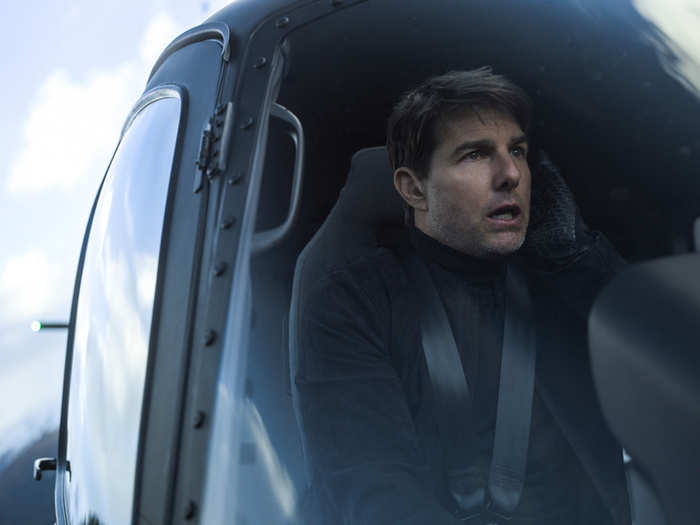
With only so many hours in the day, Cruise had to often do multiple stunt trainings on the same day in the months leading up to filming the movie.
Cruise needed experience flying a helicopter for the concluding action sequence in the movie that involves a helicopter chase, one in which he flies himself. So he would often pilot a helicopter to the drop zone where he would do his HALO jumps.
Sometimes he would even skydive into his HALO training.
“He would take off from a local airfield next to the studio and the airplane would take him to the drop zone, and he would jump out, so that's one jump done,” Eastwood said. “He’d land, get another parachute on, get in the plane waiting and go do his jumps for the HALO.”
Why Tom Cruise’s broken ankle was a good thing.
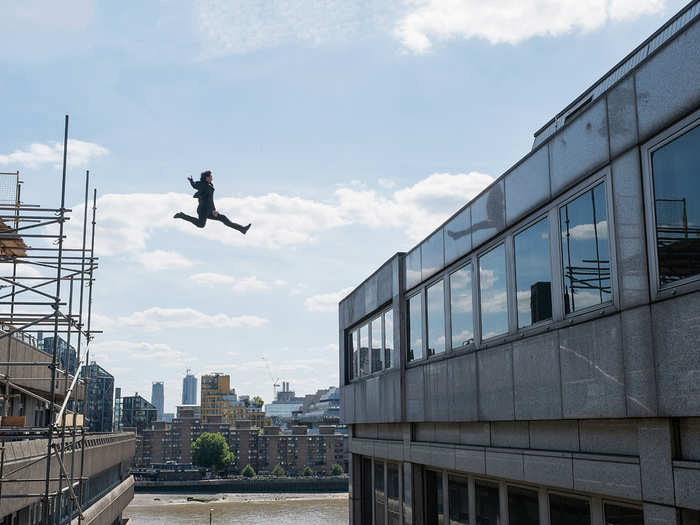
You could only imagine how the Paramount executives took the news that Tom Cruise broke his ankle while jumping rooftops for an action sequence for “Fallout.” But, it actually forced the movie to do the HALO jump as it was originally planned.
According to Hewitt, before Cruise’s injury the HALO jump was not going to be a true 25,000-foot jump as planned. Because the production was working with the Royal Air Force in the UK, it was agreed that the movie would use the RAF plane to do the stunt. But the RAF would only fly them to 12,000 feet.
“Tom didn’t want to fake it, he wanted to do it for real at 25,000 feet,” Hewitt said. “But the producers said they weren’t going to another country. It really looked like we were going to fake it with the RAF.”
However, because of Cruise’s injury, the movie missed its scheduled jump with the RAF. That opened the door for the production to end in Abu Dhabi shooting the HALO scene at 25,000 feet.
“If Tom didn’t break his ankle we would have ended up faking it, which nobody wanted,” Hewitt said.
The quick decision that saved the HALO sequence.
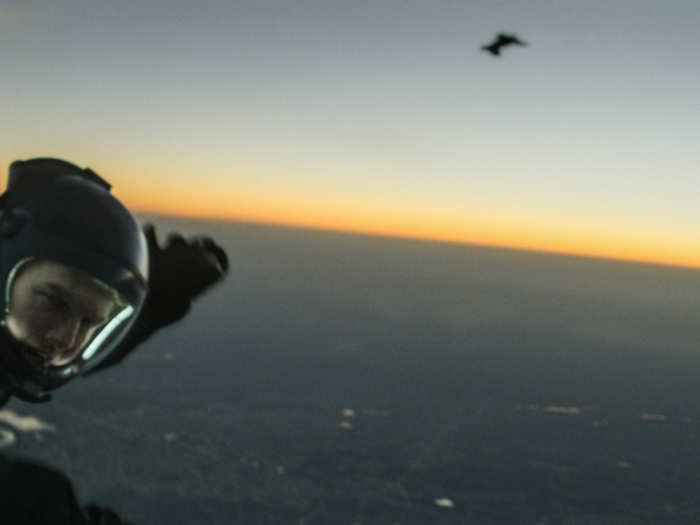
In March 2018, the “Fallout” production wrapped up in Abu Dhabi with the HALO sequence. The months of training and creation of prototype equipment for Cruise to wear on the jump finally came together on film.
And luckily, they finally found a skydiver who would strap the 20-pound camera rig on his head to film Cruise’s jump — Craig O’Brien.
“There was a lot of reluctance,” McQuarrie said of trying to find someone who would film the HALO sequence. “The first two camera men, they gave us a lot of rules and telling us what was and wasn’t possible and we’re not into that at all. We’re not reckless but what we want to hear are solutions, not restrictions.”
Enter O’Brien, who had experience being a skydiving camera operator, but had to learn a more cinematic way of shooting.
“Narrative storytelling is a very different style of framing, you’re not just capturing an event, you’re directing the eye,” McQuarrie said. “I’m making you look where I want you to look. He had to learn how to do that.”
And on top of all of that, O’Brien wasn’t looking through a camera lens. It was strapped to the top of his head, so he had to do all of that while, as McQuarrie put it, “shooting a scene through a periscope and you’re not looking through the periscope.”
O’Brien didn’t just pull it off amazingly, but also solved one of the biggest problems that befuddled everyone for the first seven jumps — why the footage was out of focus.
With the scene starting inside the C-17 plane, a focus puller was inside the plane responsible for that part of the sequence. For Cruise jumping out of the plane (Cavill, playing Walker, never did the jump, as a stuntman went in his place), O’Brien jumped out first and had to slow himself down as Cruise sped up to him. And when Cruise got three feet away from O’Brien’s helmet camera, O’Brien would then have to become the focus puller and put the dial in his hand to its closest focus.
But when they would land and look at the footage, Cruise would be out of focus.
“Tom said, ‘I was there,’ and Craig said, ‘I had the dial buried,’ someone was f---ing up and we couldn’t figure out who,” McQuarrie said.
The next day, O’Brien told the focus puller on the plane to shut off his remote once Cruise jumped out of the plane. To everyone’s surprise that was the problem. The equipment inside the plane was fighting with O’Brien’s camera.
Two weeks and 106 jumps later (many of them done at “magic hour,” dusk when they only had three minutes of perfect light to shoot), the three parts of the HALO sequence were in the can. In post production, the Abu Dhabi ground was replaced with Paris lights, and a CGI lightning storm was also added. But other than that, it was all Tom Cruise diving and twisting 25,000 feet above the ground (with O’Brien following him the whole way).
Now all that’s left — can “Mission: Impossible” top this stunt?
“I know there’s something out there, we just don’t know what it is yet,” McQuarrie said. “Whether it’s me or someone else, as long as Tom is willing to do it you can think up crazy s--t.”
Cameraman Craig O’Brien, 25,000 feet over the UAE, March 14, 2018.#MakingMissionPossible pic.twitter.com/bGQp4ARGqp
— Christopher McQuarrie (@chrismcquarrie) July 25, 2018Popular Right Now
Popular Keywords
Advertisement